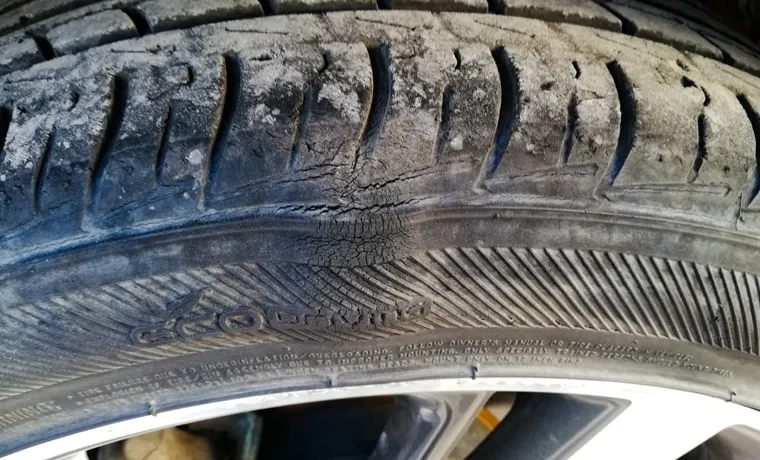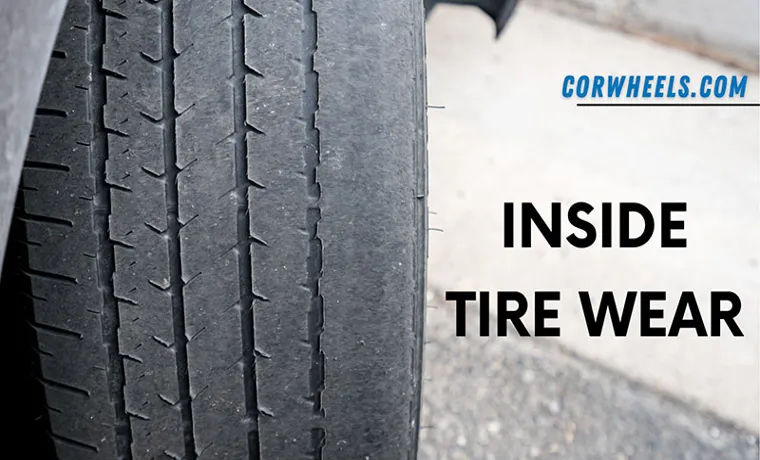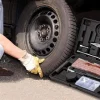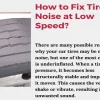Have you ever noticed that your car’s tires seem to be wearing out unevenly? Specifically, have you observed more wear on the inside of the tire compared to the outside? It’s not uncommon for car owners to experience this issue, and it can be frustrating and costly in the long run. The reasons why tires wear on the inside can vary, and some of them may be easily preventable with proper maintenance. In this blog post, we’ll explore the different factors that contribute to this tire wear pattern and discuss some tips to help you avoid it.
So fasten your seatbelt, and let’s dive in!
Table of Contents
Overview
If you’ve noticed that your tire is wearing on the inside, you might be wondering why this is happening. There are a few reasons why your tire could be wearing unevenly, but the most common cause is a misalignment in your vehicle’s suspension system. When your wheels aren’t aligned properly, it can cause excessive wear on the inside of your tire.
Additionally, worn or damaged suspension parts, such as ball joints or tie rods, can also cause your tire to wear unevenly. Another possible cause of inside tire wear is overinflation. When your tire is overinflated, it doesn’t make full contact with the road surface, which can cause uneven wear.
It’s important to address the issue as soon as possible to avoid further damage to your tire and potential safety issues.
What causes tire wear on the inside?
Tire wear on the inside is a common issue that can be caused by a variety of factors. One of the most common causes is improper wheel alignment. When your wheels are not properly aligned, they exert unequal pressure on different parts of the tire, resulting in uneven wear.
Another culprit could be worn-out suspension components, such as ball joints or control arm bushings. These components are responsible for holding the tire in place, and when they wear out, they can cause the tire to tilt inward, leading to inside tire wear. Overinflated tires can also lead to irregular tire wear, including on the inside.
It’s crucial to maintain the correct tire pressure to ensure even wear. Finally, driving habits can have an impact on tire wear. Taking corners too fast or repeatedly driving over speed bumps can cause the tire to wear out unevenly.
Keeping your tires properly aligned and inflated and maintaining your suspension components can help prevent inside tire wear.

How to identify tire wear on the inside?
Identifying tire wear on the inside is crucial for maintaining your vehicle’s safety and preventing unnecessary expenses. If you notice uneven tread wear on the inner portion of your tires, it could indicate a problem with your suspension, alignment, or even over-inflation. The most effective way to check for tire wear on the inside is by performing a visual inspection.
Use a flashlight to check the inner side of each tire for wear patterns, bulges, or cracks. If you notice any signs of wear, it’s important to have your vehicle inspected by a professional mechanic. They can diagnose the root cause of the tire wear and recommend the necessary repairs or replacements to keep your vehicle running smoothly.
Remember, regular tire maintenance and inspections can save you money in the long run and keep you safe on the road. So, don’t neglect your tires and keep an eye on their condition to ensure optimal performance.
Causes of Tire Wear on the Inside
If you’ve noticed that your tire seems to be wearing out faster on the inside, there could be several reasons for this. One possible cause is improper alignment. When your wheels are not aligned properly, it puts more pressure on the inner portion of your tires, causing them to wear out more quickly.
Another possible cause is worn suspension components. If your shocks or struts are not providing proper support, your tires can wear unevenly, with the inside wearing faster than the outside. Additionally, overinflated tires can also cause wear on the inner portion of the tire.
When your tires are overinflated, the middle of the tire bulges out, putting more pressure on the inner edge. It’s essential to check your tire pressure regularly and ensure that your tires are inflated to the manufacturer’s recommended level. Always keep an eye on the wear patterns of your tires and address any issues promptly to ensure your safety on the road.
Improper Wheel Alignment
Improper wheel alignment is a common cause of tire wear on the inside. When your wheels aren’t aligned properly, it can cause your tires to wear unevenly, which can lead to a variety of problems. One of the main causes of tire wear on the inside is camber wear.
This occurs when the top of your tire is tilted inwards or outwards, causing excessive wear on the inside or outside of the tire. Another common cause of tire wear on the inside is toe wear. This occurs when your tire is tilted too far inward or outward, causing the inner or outer edge of the tire to wear faster than the rest of the tread.
Both of these issues can be caused by a variety of factors, including worn out suspension components, damaged steering linkage, or even just hitting a curb or pothole. Regular wheel alignments can help prevent these issues and keep your tires in good condition for longer. So, if you start noticing unusual tire wear on the inside of your tires, it’s important to get your wheels checked by a professional to determine the cause and prevent further damage.
Tire Pressure Issues
Tire pressure issues can lead to various problems such as tire wear. One of the most common causes of tire wear on the inside is low tire pressure. A tire with low pressure can’t distribute weight properly, leading to uneven wear on the inside edge.
This can cause wear patterns known as “cupping” or “scalloping,” which can create a bumpy or noisy ride. Overinflated tires, on the other hand, can also lead to wear on the inside edge, known as “center wear.” Checking the tire pressure regularly and ensuring it meets the manufacturer’s recommended level can help prevent this issue.
Don’t forget to check your tire pressure when there are significant changes in temperature since it affects the pressure.
Worn or Damaged Suspension Parts
If you have noticed wear on the inside of your tires, one possible cause could be worn or damaged suspension parts. Your vehicle’s suspension system holds the tires in place and allows them to move up and down to absorb shocks from the road. Over time, the various components of your suspension can wear out or become damaged, causing the alignment of your tires to shift.
When this happens, the inside of your tires can begin to wear down unevenly and develop bald spots. To prevent this from happening, it’s important to have your suspension inspected regularly for any signs of wear or damage. A qualified mechanic can identify and repair any issues with your suspension, ensuring the safe and proper functioning of your vehicle’s tires and overall handling.
By taking care of your suspension system, you can extend the life of your tires and enjoy a smoother, safer ride on the road.
How to Prevent Tire Wear on the Inside
One of the top concerns of car owners is tire wear on the inside. The reason why tires wear on the inside is because of improper wheel alignment. When your wheels are not aligned properly, it can cause your tires to tilt inward or outward, causing uneven tread wear.
This can lead to reduced tire performance, making it harder for your vehicle to grip the road and causing your tires to wear out faster. To prevent tire wear on the inside, you should bring your car to a professional mechanic to have it aligned. Rotating your tires regularly can also help prevent uneven tread wear.
Additionally, make sure your tires are properly inflated to the recommended tire pressure, as underinflation can also cause your tires to wear on the inside. By taking these preventative measures, you can keep your tires in good condition and prolong their lifespan.
Regular Tire Rotation and Balance
Regular tire rotation and balance are essential to ensuring that your tires wear evenly and last longer. However, some drivers may notice that their tires wear more on the inside than the outside. This can be caused by a number of factors, including improper tire inflation, bad alignment, or driving habits.
One effective way to prevent tire wear on the inside is to rotate your tires regularly. Rotating your tires means moving them from one position to another, typically front to back, so that they wear evenly. This helps ensure that the inside of the tire doesn’t wear down faster than the outside.
Additionally, balancing your tires is also important. Balancing ensures that the weight of the tire is evenly distributed, preventing excess wear on one side. So, if you’re noticing uneven wear on the inside of your tires, be sure to get them rotated and balanced regularly.
This will not only help prevent future tire wear, but it can also improve your car’s handling and safety on the road.
Proper Wheel Alignment
Proper Wheel Alignment Preventing tire wear on the inside of your tires is crucial to ensure your tires last longer and ultimately, save you money. The key to doing this is maintaining proper wheel alignment. Simply put, wheel alignment refers to the angle and direction of your tires’ position relative to your vehicle.
If your tires are aligned properly and pointing in the right direction, you’ll experience less resistance and, therefore, less wear and tear on your tires. But if your tires are misaligned and pointing in different directions, the inside of your tires will experience more friction and wear faster than they should. To avoid this, you should have your wheel alignment inspected and corrected regularly by a professional.
Doing so will not only increase the lifespan of your tires and save you money, but also ensure your car handles and drives better overall. Proper wheel alignment is a simple but crucial aspect of car maintenance that can save you a lot of trouble down the road.
Checking and Maintaining Tire Pressure
As a car owner, it’s important to regularly check and maintain tire pressure to ensure optimal performance and prevent tire wear on the inside. When the pressure is too low, it causes the tire to flatten out, creating a larger surface area that makes it harder to control the vehicle. On the other hand, when the pressure is too high, it causes the center of the tire to bulge out, putting undue stress on the middle of the tire and leading to rapid wear and tear.
It’s best to keep the tire pressure at the recommended levels as specified in the owner’s manual or by the manufacturer. If you notice that your car is pulling to one side, or if there is uneven wear on your tires, it’s a sign that your wheels may be misaligned and in need of professional attention. By regularly maintaining tire pressure, you can ensure better fuel economy, longer-lasting tires, and more control over your vehicle.
Conclusion
In conclusion, your tire may be wearing on the inside because it has been keeping all the secrets from the outside world. As an introverted tire, it has neglected to socialize evenly with the road, causing it to wear unevenly. So next time, make sure your tire gets out and about on the pavement to prevent any drama on the inside.
“
FAQs
What can cause tire wear on the inside?
Tire wear on the inside can be caused by a misaligned suspension system, worn out ball joints or tie rod ends, low tire pressure, or driving on unbalanced wheels.
How can I prevent tire wear on the inside?
To prevent tire wear on the inside, you should regularly check your tire pressure, have your wheels balanced and aligned, and replace worn out suspension components.
Can tire wear on the inside be an indication of other problems?
Yes, tire wear on the inside can be a sign of other problems such as worn shocks or struts, damaged wheel bearings, or a bent wheel.
Is it safe to drive on tires with wear on the inside?
No, it is not safe to drive on tires with wear on the inside. It can cause handling issues and reduce the overall lifespan of the tire.
How often should I check for tire wear on the inside?
You should check for tire wear on the inside at least once a month, especially if you notice uneven tire wear or handling issues while driving.
Can tire wear on the inside be fixed by rotating my tires?
No, rotating your tires will not fix tire wear on the inside. It may help to prolong the overall lifespan of your tires, but it will not correct the underlying issue causing the wear.
How much does it cost to fix tire wear on the inside?
The cost to fix tire wear on the inside can vary depending on the underlying issue. It can range from a simple tire alignment costing around $80 to replacing suspension components costing $500 or more.



